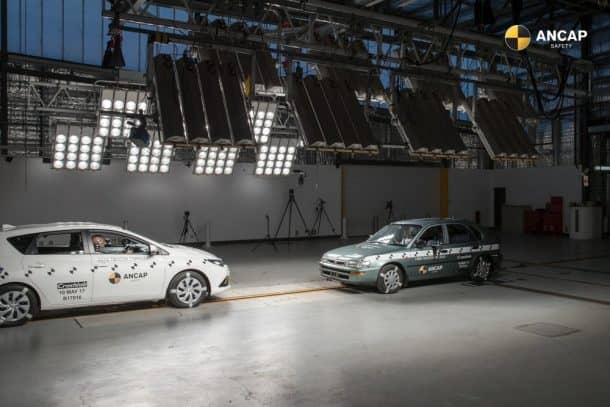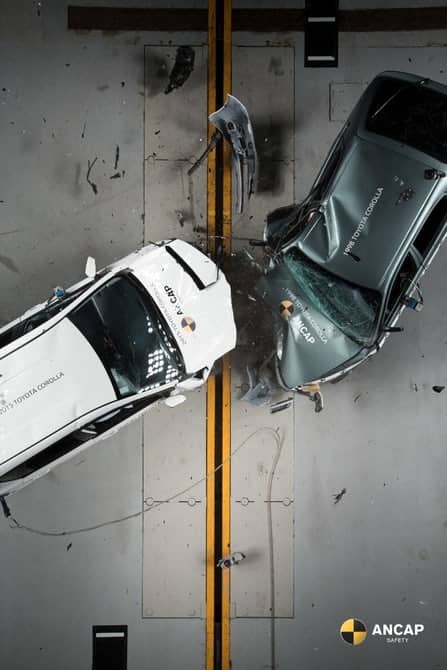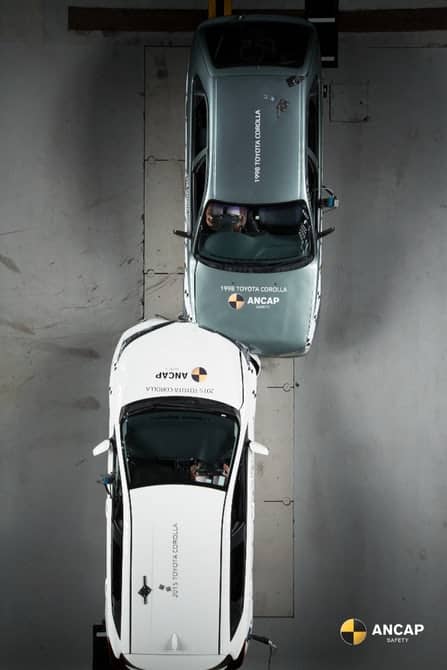In the past two decades, there has been an astounding amount of advancement in Vehicular Safety, which not only involves the features that keep you alive in case of a crash, there are features that help you prevent it as well. To help you understand how far we have come, first let us see these advanced features. The development in the areas of structural integrity of the vehicle, safety features such as Antilock Braking System, Electronic Stability Control and most popularly Airbags proves lifesaving in case of a collision whereas Saftey Assist Technology SAT help you avoid the collision altogether. Since human error causes almost 90% of the car crashes, SAT include Lane Departure Warning LDW, Autonomous Emergency Braking AEB, Fatigue Monitoring Systems FMS, and Blind Spot Monitoring BSM. Australian New Car Assessment Program ANCAP demonstrated the progress by conducting a Car Crash.

The 2nd week of May 2017 marked the 4th United Nations’ Global Road Saftey Week; ANCAP took the opportunity to raise awareness to use advanced cars as compared to old ones for road safety purposes. The crash test involved a 1998 Toyota Corolla against a 2015 Toyota Corolla, enacting a head-on collision more formally called the frontal offset test at the speeds of 64 Kilometers per hour or 40 miles an hour.
“This test physically illustrates the benefits of newer, safer cars,” said ANCAP Chief Executive Officer, James Goodwin.
Australian vehicle fleet Analysis showed that only 20% of the vehicle manufactured before the year 2000 are registered in vehicle fleets and 33% of them are involved in fatal car crashes. Whereas the 31% built after 2011 are registered vehicle fleet and account for 13% fatal crashes.
“It is concerning the rate of fatal crashes is four times higher for older vehicles than for new vehicles. We’ve been tracking the average age of a vehicle involved in a fatal crash, and in just one year we’ve seen that average increase from 12.5 years to 12.9 years. This highlights the need for a renewed national focus and greater support for safer vehicles,” said Mr. Goodwin.
There is a significant correlation between the age of the vehicle and its involvement in collisions. The age of a vehicle fleet is 14.3 years on average as compared to the mean age 15.6 years of a vehicle fleet that has crashed and caused fatality.

“It is unfortunate we tend to see our most at-risk drivers – the young and inexperienced, as well as the elderly and more frail – in the most at-risk vehicles, and we hope this test promotes a conversation to encourage all motorists to consider the safety of their car,” Goodwin.
“The outcomes of this test are stark, and the automotive, finance and insurance industries can play a part to assist in encouraging people into newer, safer cars. The older car sustained catastrophic structural failure with dummy readings showing an extremely high risk of serious head, chest and leg injury to the driver. It achieved a score of just 0.40 out of 16 points – zero stars. In contrast, the current model performed very well with a five star level of protection offered, scoring 12.93 out of 16 points” said Mr. Goodwin.
The mortality rate is four times higher in an old car as opposed to a new one, and it is all the more reason to give your car an upgrade.


